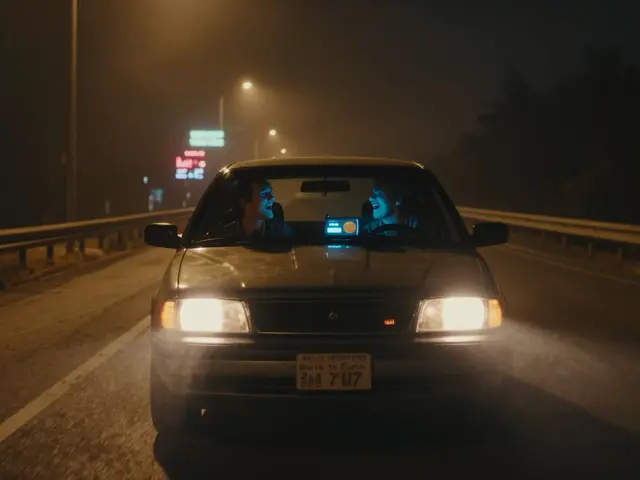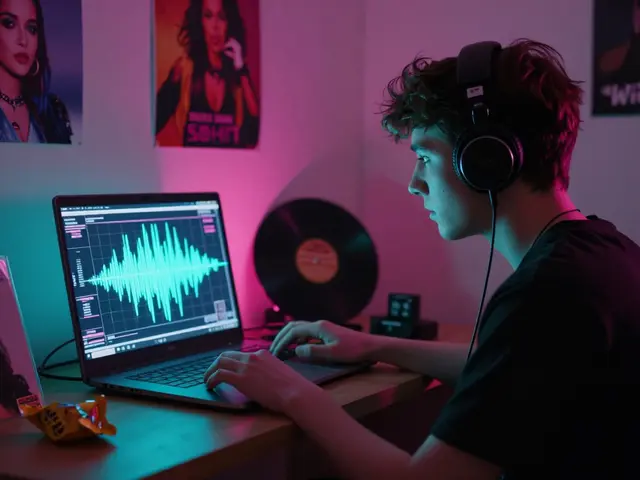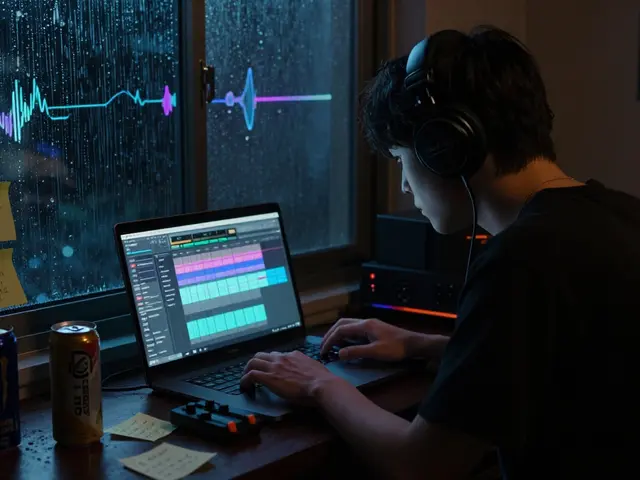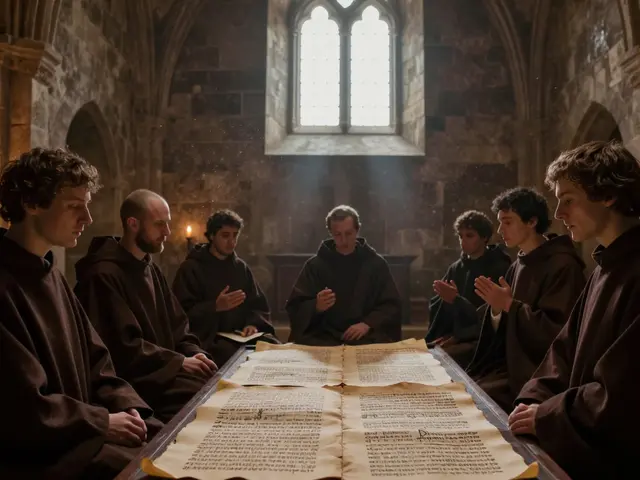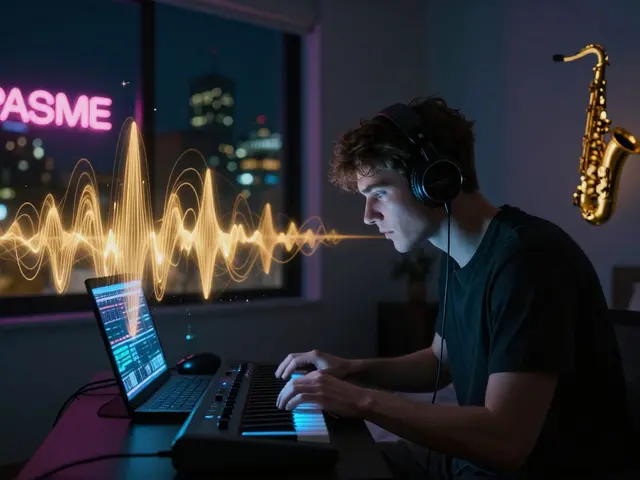Classical music, often seen as the foundation of Western music, has left an indelible mark on various modern genres. It's not just a relic of the past but a living, breathing influence that pervades today's music scene in subtle and fascinating ways.
The intricate compositions and emotional depth of classical music have inspired countless musicians across different genres, creating a rich tapestry of sound that continues to evolve. From the powerful symphonic elements in rock and pop, to the complex chords and improvisations in jazz, classical music's fingerprints are everywhere.
In this article, we delve into how classical music has shaped and influenced rock, jazz, hip-hop, and electronic music. By understanding these connections, we can better appreciate the richness of contemporary music and the timeless beauty of classical compositions.
- Classical Roots in Rock and Pop
- Influence on Jazz and Blues
- Hip-Hop's Use of Classical Samples
- Electronics and Orchestral Elements
Classical Roots in Rock and Pop
Classical music has had a profound influence on rock and pop genres, shaping their sound and structure in ways that might not be immediately obvious. When you listen closely, you will find traces of classical melodies, harmonies, and even entire chord progressions embedded in the fabric of many rock and pop songs. Bands like The Beatles, Queen, and Led Zeppelin have openly acknowledged the impact of classical music on their work.
Take The Beatles' song "Yesterday." Paul McCartney mentioned how he envisioned the song with a string quartet, a classical music touch that lent a timeless feel to the melody. Incorporating classical elements into rock and pop music often elevated these songs to new artistic heights, showing how interconnected these genres truly are. Queen's "Bohemian Rhapsody" is another prime example, blending operatic elements with rock to create a unique, almost symphonic experience.
When you dig deeper into Led Zeppelin's discography, you'll find deep classical influences. Jimmy Page, the band's guitarist, often integrated baroque and Renaissance musical elements into his compositions, with songs like "Stairway to Heaven" showcasing this intricate interplay. The use of non-standard time signatures and complex arrangements pointed directly to classical roots.
The fusion of rock with classical music is not just a thing of the past. Modern bands like Muse continue to draw inspiration from classical compositions. Their album "The Resistance" features orchestral arrangements and complex musical structures that harken back to the works of great composers like Bach and Beethoven. This blending of genres creates music that feels innovative while paying homage to its roots.
This seamless integration allows listeners to appreciate rock and pop on a deeper level. You start to recognize how classical music's emotional depth and complex structures have enriched modern compositions. Brian May, Queen's guitarist, once said, "Classical music is timeless and always relevant because it touches on the human experience in a profound way."
Interestingly, the influence goes both ways. The symphonic rock genre emerged as a bridge between classical symphonies and rock, leading to collaborations that brought together rock bands and classical orchestras. One notable example is Metallica's "S&M" album, where the band performed alongside the San Francisco Symphony, breathing new life into both their original works and the classical tradition.
The historical context of classical music's influence can be traced to early music education. Many rock musicians received formal training in classical music, which equipped them with the tools to experiment and push the boundaries of rock and pop. The outcome is music that resonates with a wide audience by blending catchy rock hooks with the sophistication of classical compositions.
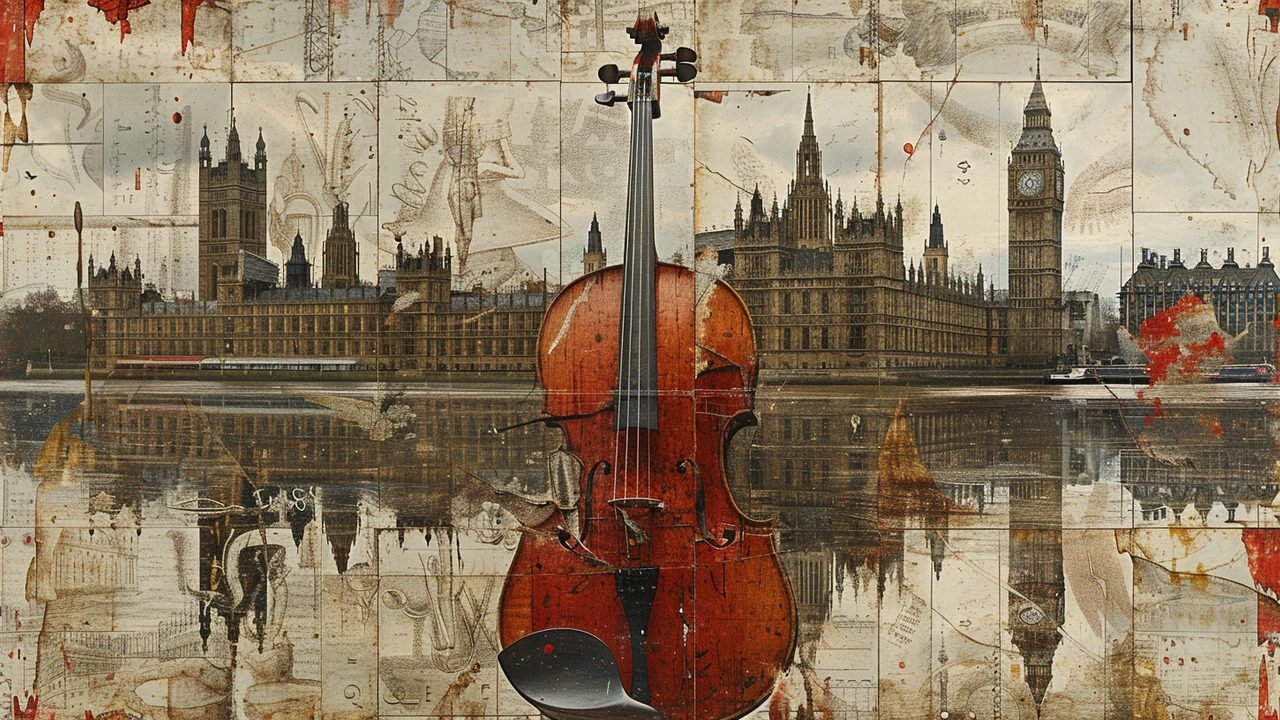
Influence on Jazz and Blues
Jazz and blues are two genres that have profoundly unfolded from the rich, intricate compositions of classical music. The deep emotional resonance of blues and the complex harmonies and rhythms of jazz find significant roots in classical traditions. The unique blend of spontaneity and structure found in jazz, for instance, mirrors the improvisational practices of Baroque musicians, while blues often draws from the emotive depths that composers like Beethoven and Chopin explored.
Renowned jazz musicians like Duke Ellington and Thelonious Monk openly acknowledged their classical influences. Ellington's classically inspired orchestral arrangements and use of instruments like the viola and clarinet often brought a classical texture to his compositions. Similarly, Monk's unorthodox and brilliant use of dissonance and atonality has parallels to 20th-century classical composers like Arnold Schoenberg and Igor Stravinsky. The collaboration between classical and jazz musicians further underlines this relationship. For instance, the album 'Sketches of Spain' by Miles Davis features compositions by classical composer Joaquín Rodrigo.
On the other hand, the blues scale, fundamental to this genre, shares a common ground with the modal scales frequently used in classical music. The pentatonic scales often found in blues music mirror those used in Asian and African classical traditions. Additionally, the format of the twelve-bar blues can be seen as a simplified reflection of classical structures, offering a repetitive but compelling structure over which emotional expression can flourish. The intricate melodies and counterpoints of Johann Sebastian Bach have a mirrored complexity in the improvisational lines of jazz saxophonists like John Coltrane.
An interesting fact is that George Gershwin, known for his jazz and classical crossovers, composed 'Rhapsody in Blue' which brilliantly combines classical and jazz elements. He demonstrated how a symphonic orchestra could be blended with a jazz band, creating a timeless piece that is celebrated in both jazz and classical circles. This piece alone has shown generations of musicians how fluid the boundaries between these genres can be.
"Jazz is not just music, it's a way of life, it's a way of being, a way of thinking" — Nina Simone
The influence is not one-way; jazz and blues have also shaped contemporary classical music, giving birth to unique styles such as Third Stream, a synthesis of classical music and jazz. This bi-directional influence ensures a continuous, dynamic conversation between these genres. Works by modern composers like Leonard Bernstein and John Adams showcase sophisticated jazz harmonies and rhythms within a classical framework, creating a fresh and contemporary sound that resonates with today's audiences.
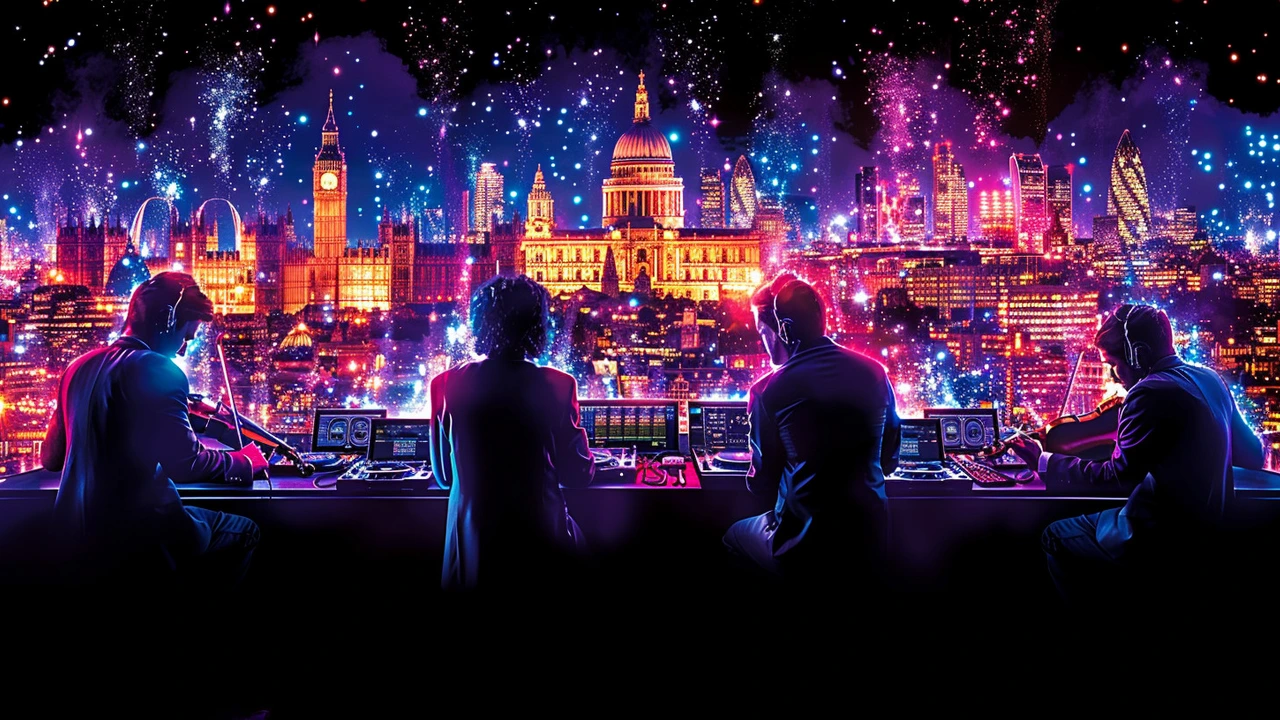
Hip-Hop's Use of Classical Samples
When you think of classical music, hip-hop might not be the first genre that comes to mind. However, the innovative world of hip-hop has a rich history of dipping into the classical treasure trove to create new, exciting sounds. This unlikely fusion has breathed fresh life into both genres, creating something wholly unique and modern.
This blending of classical and hip-hop dates back to the late 80s and early 90s when producers started sampling classical compositions in their beats. One of the most iconic examples is the Wu-Tang Clan's use of Beethoven's 'Für Elise' in their track 'Deadly Melody.' This clever sampling brought a haunting, timeless quality to the song, showcasing how classical music can add depth and emotion to hip-hop tracks.
Apart from sampling, hip-hop artists also use orchestral arrangements in their music to bring a grand, lush sound to their compositions. Jay-Z, for instance, famously collaborated with the BBC Symphony Orchestra for a concert at the Royal Albert Hall in 2006. The blend of his rap with the live classical orchestrations created a mesmerizing contrast that highlighted the versatility and timeless nature of classical music.
Hip-hop producers, known for their keen ears and creative prowess, often turn to classical pieces for their intricate melodies and dramatic dynamics. The complexity and emotional intensity of classical music lend weight to hip-hop tracks, allowing artists to craft songs that resonate deeply with listeners. This fusion not only elevates hip-hop but also introduces classical music to younger audiences who may not have encountered it otherwise.
Modern technology has made this fusion even more seamless. With advanced sampling software and digital editing tools, producers can now effortlessly incorporate classical elements into their tracks, manipulating and reimagining them to suit their artistic vision. This technological shift has expanded the creative possibilities, leading to more innovative and boundary-pushing music.
One notable example of classical influence in hip-hop is Nas's track 'I Can,' which samples Beethoven's 'Piano Sonata No. 8' (also known as the 'Pathétique' Sonata). The song's uplifting message is underscored by the classical piece's powerful, emotive melody, creating a juxtaposition that is both inspiring and thought-provoking.
These examples highlight the incredible versatility and enduring influence of classical music. By weaving classical samples and arrangements into their work, hip-hop artists are paying homage to the great composers of the past while also pushing the boundaries of their own genre. This cross-pollination of musical styles enriches both classical and hip-hop, proving that great music, regardless of its origin, is timeless and universal.
"Hip-hop is inherently innovative, and our ability to take from the past—whether it's jazz, funk, or classical—and create something new is what keeps the genre evolving," said renowned music producer 9th Wonder.
For aspiring producers, exploring classical music can open up a world of inspiration. By studying classical compositions, they can learn about complex structures, dynamic ranges, and emotional storytelling—all essential elements for crafting impactful hip-hop tracks. Whether it's through direct sampling or inspired reinterpretation, classical music offers a rich resource for those willing to explore its depths.
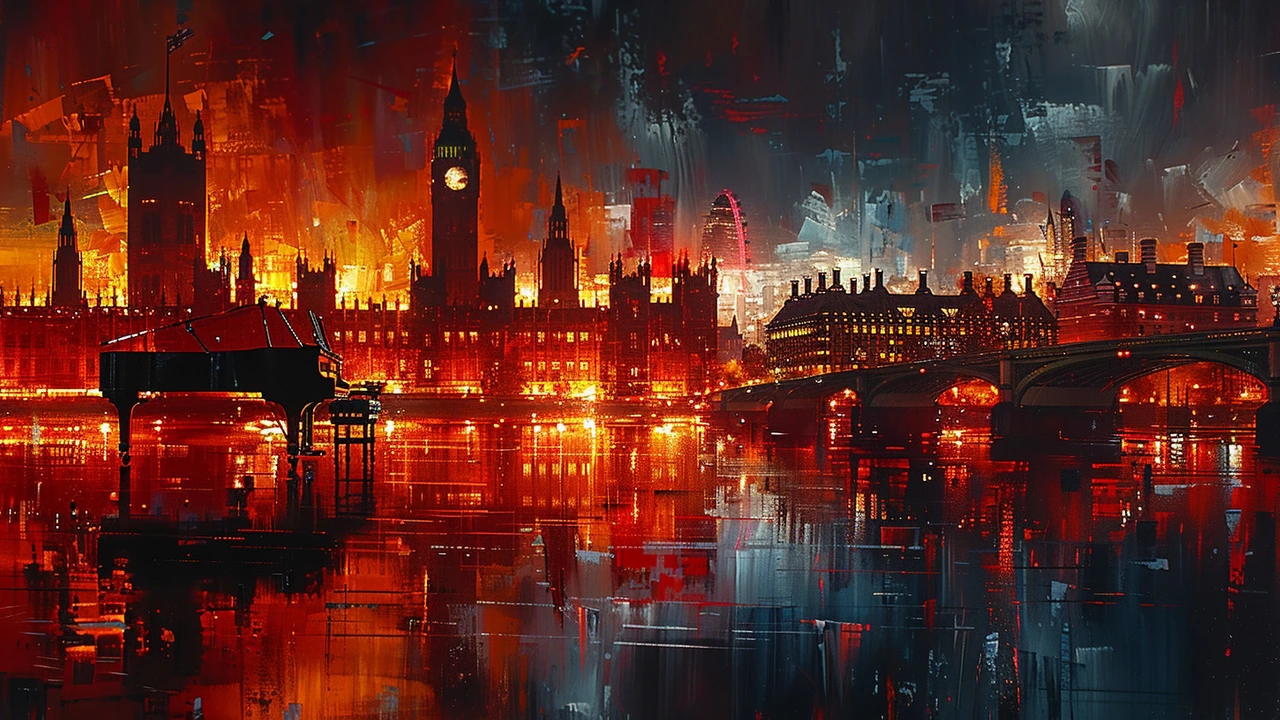
Electronics and Orchestral Elements
The marriage of electronic music and classical orchestrations has given birth to some of the most awe-inspiring sounds in modern music. This combination isn't merely about juxtaposing the old with the new; it's about integrating the timeless elegance of symphonic music with the boundless possibilities of electronic soundscapes. The result is often music that is both deeply emotive and strikingly innovative.
One classic example is the work of Vangelis, the Greek composer renowned for his ability to blend orchestral elements with synthesizers. His score for the film Blade Runner remains a seminal piece in the realm of electronic music, demonstrating how classical music principles can enhance synthetic sounds. Similarly, Daft Punk's soundtrack for Tron: Legacy masterfully combines sweeping orchestral scores with cutting-edge electronic beats, creating a soundscape that's as grand as it is modern.
Producers and DJs too have increasingly turned to orchestral elements. Artists like Moby often use string sections to enrich their electronic tracks, adding layers of emotion and depth. Robert Miles, known for his trance classic 'Children,' utilized piano melodies and orchestral backing to create a timeless tune that resonates well beyond its genre. This trend isn't limited to one type of music; even hip-hop producers like Kanye West have successfully incorporated classical strings into their beats, adding a dramatic flair that captures the listener's ear.
In live performances, the fusion of electronic and classical music can be even more dramatic. The BBC Proms, traditionally a bastion of classical music, has featured electronic artists such as Pete Tong performing with full orchestras. These events illustrate how seamlessly these two worlds can blend, captivating audiences with the timeless beauty of orchestral music complemented by the pulsating energy of electronic sounds.
Interestingly, a recent study showed that integrating classical music elements into electronic music can increase listener engagement. According to the research, tracks that feature orchestral components tend to have higher retention rates and are more likely to be added to users' personalized playlists. This suggests a persistent, if subconscious, preference for the rich textures and harmonies that classical music provides.
"The integration of classical elements into electronic music not only enriches the sound but also bridges cultural and generational divides," noted music historian Mark Prendergast.
Another noteworthy trend is the rise of neo-classical composers like Ludovico Einaudi and Ólafur Arnalds, who blend acoustic and electronic elements to create hauntingly beautiful music that appeals to both classical aficionados and electronic music fans. Both artists have achieved considerable success, proving that there's a significant appetite for this kind of music today.
To truly appreciate the fusion of electronic and orchestral music, one must experience it firsthand. Next time you listen to your favorite electronic track, pay attention to the classical influences embedded within. The symphonic strings, the grandeur of a full orchestra, and the intricate compositions all enhance the music, providing a richer, more immersive experience. It's a reminder that while music technologies evolve, the timeless elements of classical music continue to hold their ground, enriching and inspiring new genres in unexpected ways.


